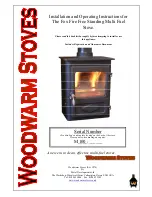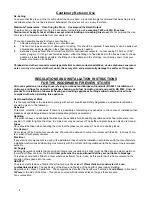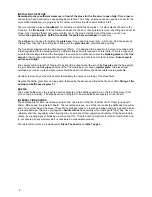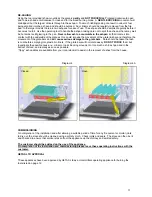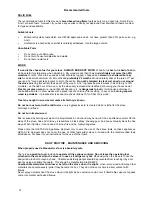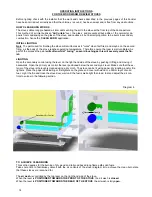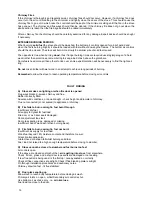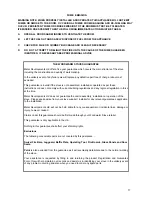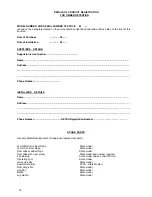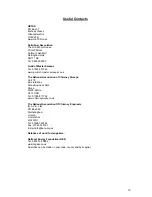
4
Cautionary Notes on Use
De-Ashing
To ensure that the stove will not overfire whilst the door is open, we would strongly recommend that de-ashing is only
undertaken when the fuel load is almost exhausted, the stove is out or in a very low state.
Maximum Temperature
-
Over-firing the Stove
-
Use Beyond the Rated Output
The stove body is designed to run up to a maximum temperature
not exceeding
700F or 400C (the stove
firedoor must be kept shut at all times except when re-fuelling or de-ashing the stove).
We recommend the use
of a stove thermometer available from your dealer or us.
There are 3 possible causes for stoves over-heating :-
1.
After de-ashing as above, primary air vents left open.
2.
The fire door rope seal worn or damaged or missing. This should be replaced if necessary or can be pulled out,
adjusted and easily re-placed in their channels. No fixative is needed.
3.
Excessive chimney draw (the minimum flue draft for nominal heat output is:- not exceeding 0.15 mbar (0.06"
water gauge)). If it is high use remedial action; either the fitting of a flue stabiliser to the flue as close to the ap-
pliance as is aesthetically possible, the fitting of a flue damper in the chimney, or a chimney cowl. (Ask your
dealer or contact us for details).
Chipboard and other composite wood-type materials contain corrosive additives, as do sulphurous coal prod-
ucts
especially when
mixed with wet wood, these may etch and permanently damage the surface of the glass.
REGULATIONS AND INSTALLATION INSTRUCTIONS
FOR THE WOODWARM FIREVIEW STOVES
All local regulations, including those referring to national and European Standards (BS 6461, Installation of
chimneys and flues for domestic appliances burning solid fuel (including wood and peat) & BS 8303, Code of
practice for installation of domestic heating and cooking appliances burning solid mineral fuel) need to be
complied with when installing this appliance.
Health and Safety at Work
It is the responsibility of the installer to comply with current Health and Safety Regulations, and particular attention
should be given to the following:-
Asbestos
This stove contains no asbestos. If there is a possibility of disturbing any asbestos in the course of installation then
please seek specialist guidance and use appropriate protective equipment.
Handling
This stove is heavy and adequate facilities must be available for all handling operations and its final manoeuvre into
position. In order to lighten the stove, the main door may be removed. The baffle and grate bars can also be removed.
Glass
Care should be taken when handling the door that the glass is not knocked. The door is double glazed.
Fire Cement
Some types of Fire Cement are caustic and should not be allowed to come into contact with the skin. In cases of con-
tact, wash off with plenty of water.
Electrical
If any electrical components are used in the installation they should be installed in accordance with the manufacturers
installation instructions and all wiring must comply with the current I.E.E regulations and the by-laws of the local water
authority.
Air Supply
Building Regulations dictate that an air vent of some type (usually an air brick) must be fitted into an exterior wall to al-
low sufficient flow of air into the fire.
Air Inlet grills must be so positioned that they are not liable to blockage.
This stove should not be fitted in a room where an extractor fan is in use, as this could result in flue reversal and the
emission of flue gases into the room.
HEARTH
The stove must stand on a fireproof hearth which must be at least
127mm thick and constructed of a non-
combustible material
. The positioning of the stove and the size of the hearth is governed by Building
Regulations for Class 1 Appliances. These regulations state that the hearth must extend at least
225mm
in front and
152mm
to the side of the stove
.
This can be covered with decorative tiles so long as these are also
non-combustible.
Summary of Contents for Fox Fire
Page 20: ...20 30 09 09...

